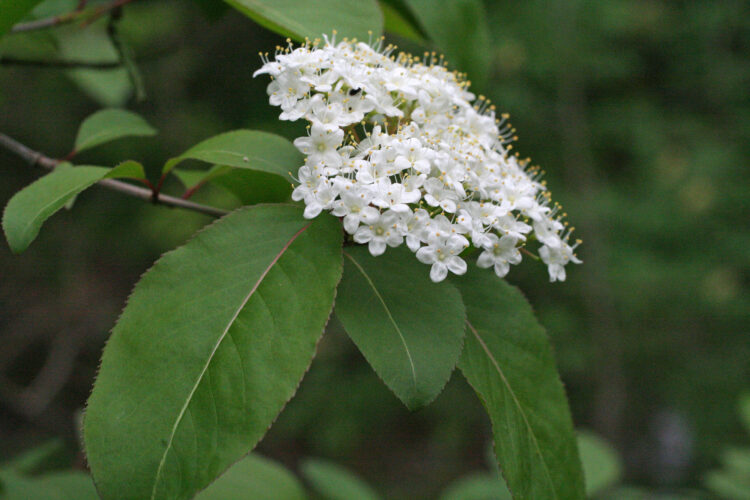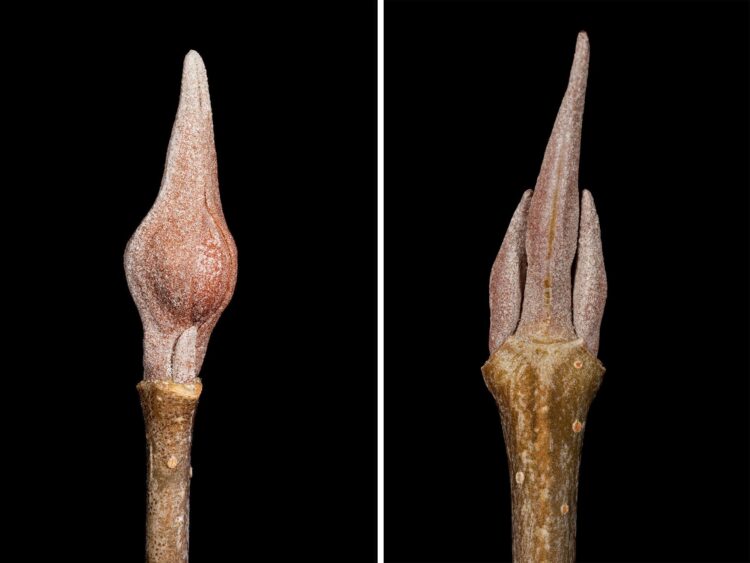blackhaw (Viburnum prunifolium)
Adoxaceae, the moscatel, family
How to recognize blackhaw. This is a shrub or small tree with oppositely arranged simple leaves that have finely toothed margins. True to its specific epithet, they are rather cherry-like in appearance.

Blackhaw is an opposite-leaved shrub with cherry-like leaves.
Flowers and fruits. Our members of the genus Viburnum have small white radially symmetric flowers with 5 fused petals and an inferior ovary. The are arranged in branched flat-topped clusters (compound cymes).

Blackhaw flowers, May 4, 2006.
The fruits are flattened drupes, eventually turning blue-black. (The photo below shows unripe ones in mid-summer).

As with all viburnums, the blackhaw fruit is a drupe.
In the winter. Blackhaw twigs have buds covered by paired scales that meet at the edges.

Blackhaw twigs: left shows a flower bud, while the right is simple a branch bud at the tip.
Where to find blackhaw. E. Lucy Braun, in The Woody Plants of Ohio (1961, 1989; The Ohio State University Press) tells us that this species is “A large shrub, sometimes tree-like and 3-5 m. Tall, growing singly or in patches, in dry or wet situations. More extensive in range than any of our other species, occurring throughout Ohio”.
Scanned Image from an Old Book
(Flora of West Virginia, by P.D. Strausbaugh and Earl L. Core)

blackhaw
Ooh ooh. I have a question!
Hey, I like the name blackhaw just fine and it’s the only correct quiz answer, but could we just for fun devise an alternative name following the pattern we see for maple-leaved viburnum?
Oh, good idea! Since Viburnum acerifolium is named “maple-leaf viburnum” (after Acer meaning maple and folium, leaved), it would make sense to call Viburnum prunifolium “cherry-leaf viburnum” because Prunus is the cherry genus.
